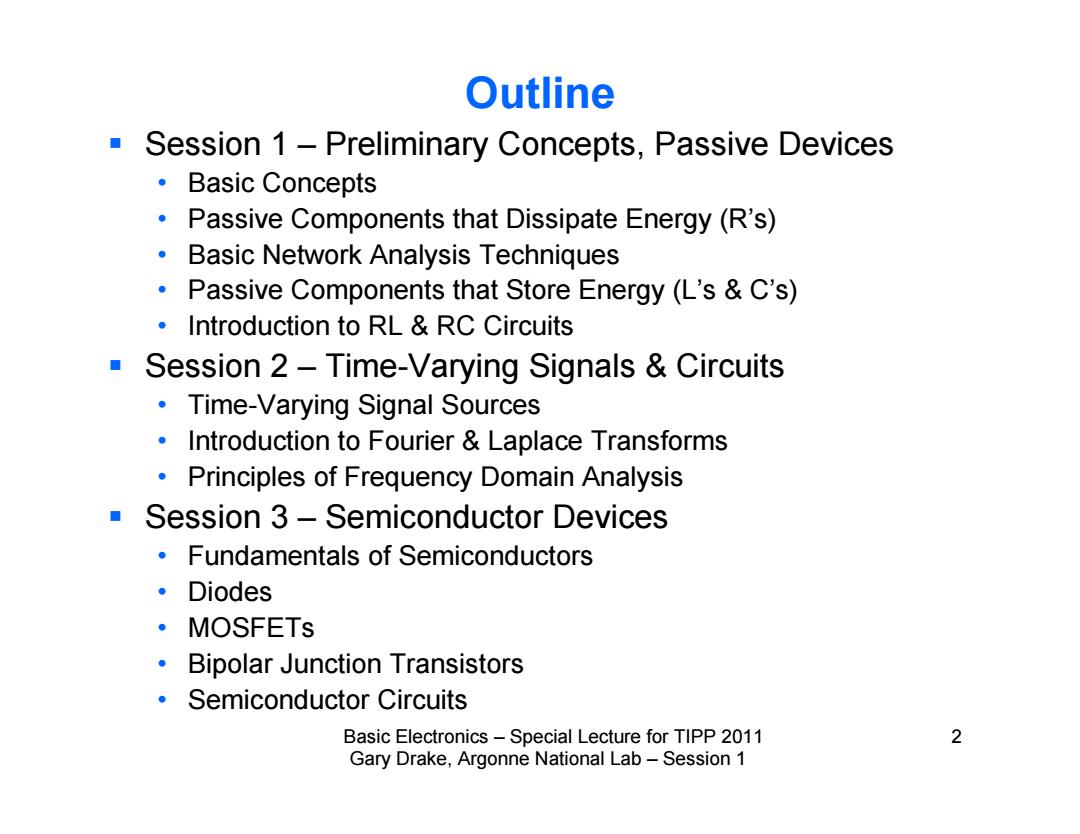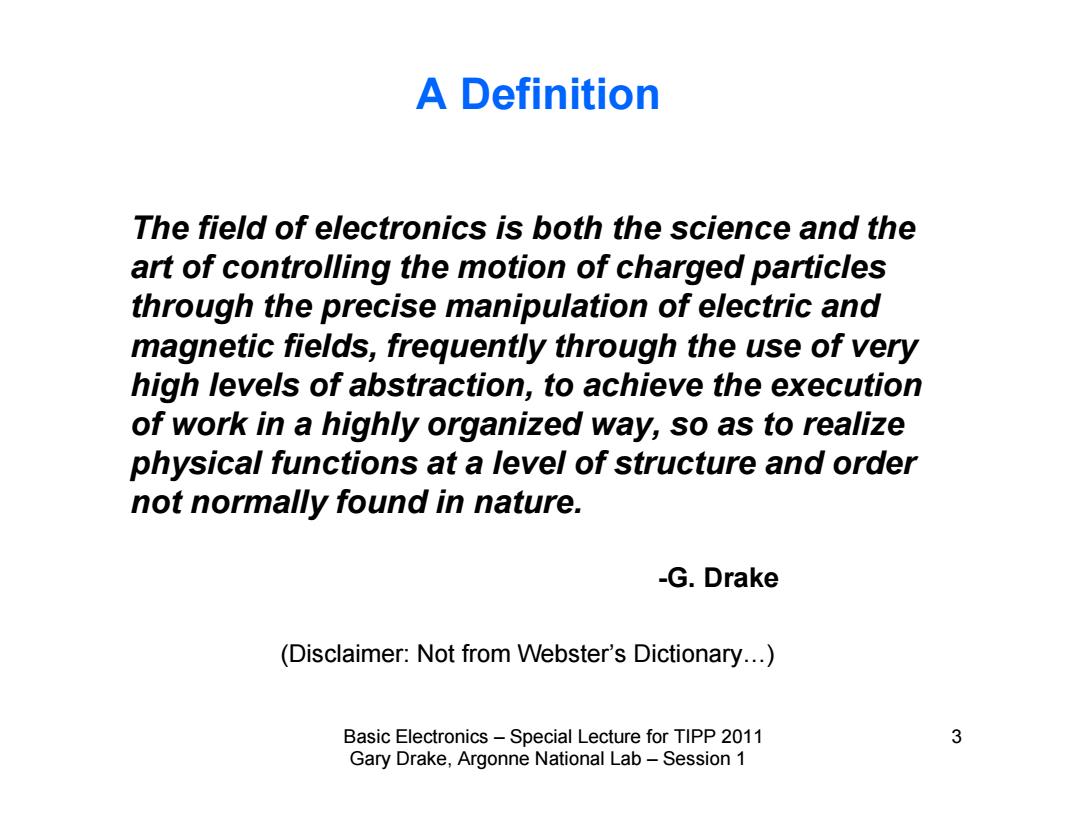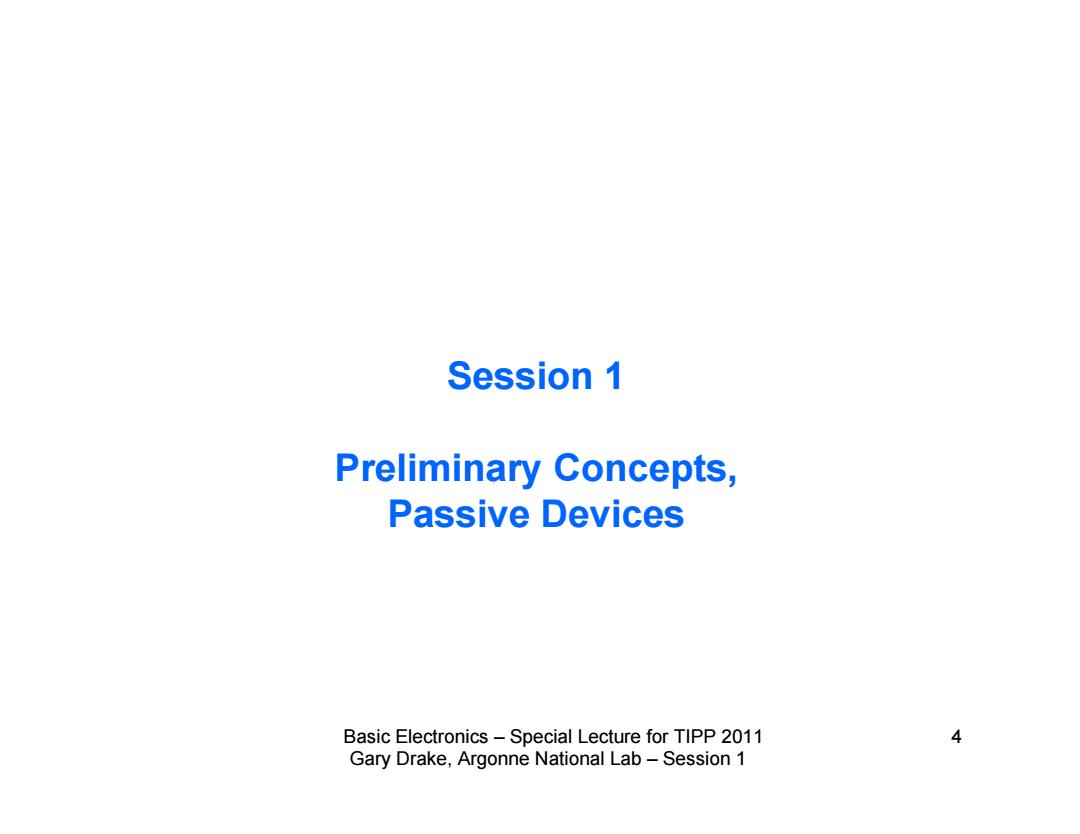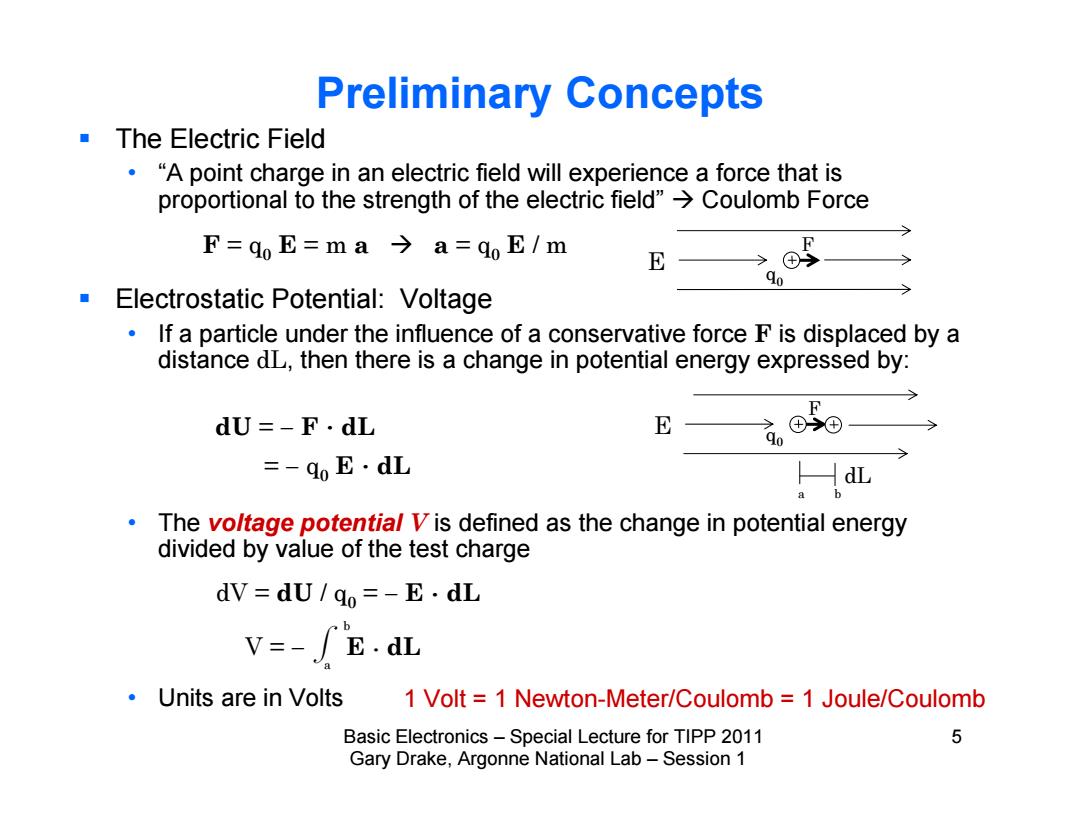
Basic Electronics Introductory Lecture Course for Technology and Instrumentation in Particle Physics 2011 Chicago,Illinois June9-14,2011 Presented By Gary Drake Argonne National Laboratory drake@anl.gov
Basic Electronics Introductory Lecture Course for Technology and Instrumentation in Particle Physics 2011 Chicago, Illinois June 9-14, 2011 Presented By Gary Drake Argonne National Laboratory drake@anl.gov

Outline Session 1 Preliminary Concepts,Passive Devices ·Basic Concepts Passive Components that Dissipate Energy(R's) Basic Network Analysis Techniques Passive Components that Store Energy(L's C's) Introduction to RL&RC Circuits Session 2-Time-Varying Signals Circuits Time-Varying Signal Sources Introduction to Fourier Laplace Transforms Principles of Frequency Domain Analysis Session 3-Semiconductor Devices Fundamentals of Semiconductors ·Diodes ·MOSFETs Bipolar Junction Transistors Semiconductor Circuits Basic Electronics-Special Lecture for TIPP 2011 2 Gary Drake,Argonne National Lab-Session 1
Basic Electronics – Special Lecture for TIPP 2011 2 Gary Drake, Argonne National Lab – Session 1 Outline Session 1 – Preliminary Concepts, Passive Devices • Basic Concepts • Passive Components that Dissipate Energy (R’s) • Basic Network Analysis Techniques • Passive Components that Store Energy (L’s & C’s) • Introduction to RL & RC Circuits Session 2 – Time-Varying Signals & Circuits • Time-Varying Signal Sources • Introduction to Fourier & Laplace Transforms • Principles of Frequency Domain Analysis Session 3 – Semiconductor Devices • Fundamentals of Semiconductors • Diodes • MOSFETs • Bipolar Junction Transistors • Semiconductor Circuits

A Definition The field of electronics is both the science and the art of controlling the motion of charged particles through the precise manipulation of electric and magnetic fields,frequently through the use of very high levels of abstraction,to achieve the execution of work in a highly organized way,so as to realize physical functions at a level of structure and order not normally found in nature. -G.Drake (Disclaimer:Not from Webster's Dictionary...) Basic Electronics-Special Lecture for TIPP 2011 3 Gary Drake,Argonne National Lab-Session 1
Basic Electronics – Special Lecture for TIPP 2011 3 Gary Drake, Argonne National Lab – Session 1 A Definition The field of electronics is both the science and the art of controlling the motion of charged particles through the precise manipulation of electric and magnetic fields, frequently through the use of very high levels of abstraction, to achieve the execution of work in a highly organized way, so as to realize physical functions at a level of structure and order not normally found in nature. -G. Drake (Disclaimer: Not from Webster’s Dictionary…)

Session 1 Preliminary Concepts, Passive Devices Basic Electronics-Special Lecture for TIPP 2011 4 Gary Drake,Argonne National Lab-Session 1
Basic Electronics – Special Lecture for TIPP 2011 4 Gary Drake, Argonne National Lab – Session 1 Session 1 Preliminary Concepts, Passive Devices

Preliminary Concepts The Electric Field ."A point charge in an electric field will experience a force that is proportional to the strength of the electric field">Coulomb Force F=qoE=ma→a=q0E/m F E 90 Electrostatic Potential:Voltage If a particle under the influence of a conservative force F is displaced by a distance dL,then there is a change in potential energy expressed by: F dU=-F·dL E >⊕① go =-qoE·dL HaL The voltage potential V is defined as the change in potential energy divided by value of the test charge dV=dU/qo=-E·dL V=-/E.dL ·Units are in Volts 1 Volt 1 Newton-Meter/Coulomb 1 Joule/Coulomb Basic Electronics-Special Lecture for TIPP 2011 5 Gary Drake,Argonne National Lab-Session 1
Basic Electronics – Special Lecture for TIPP 2011 5 Gary Drake, Argonne National Lab – Session 1 Preliminary Concepts The Electric Field • “A point charge in an electric field will experience a force that is proportional to the strength of the electric field” Coulomb Force Electrostatic Potential: Voltage • If a particle under the influence of a conservative force F is displaced by a distance dL, then there is a change in potential energy expressed by: • The voltage potential V is defined as the change in potential energy divided by value of the test charge • Units are in Volts F = q0 E = m a a = q0 E / m E F dU = F . dL = q0 E . dL E F dV = dU / q0 = E . dL V = f E . dL a b q0 q0 a b dL 1 Volt = 1 Newton-Meter/Coulomb = 1 Joule/Coulomb